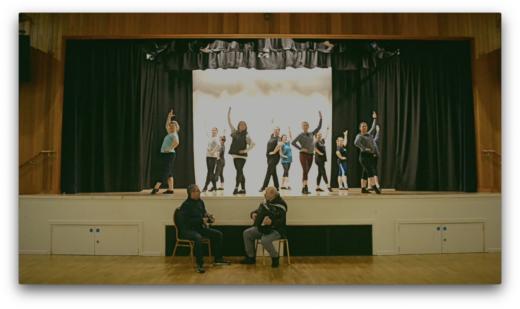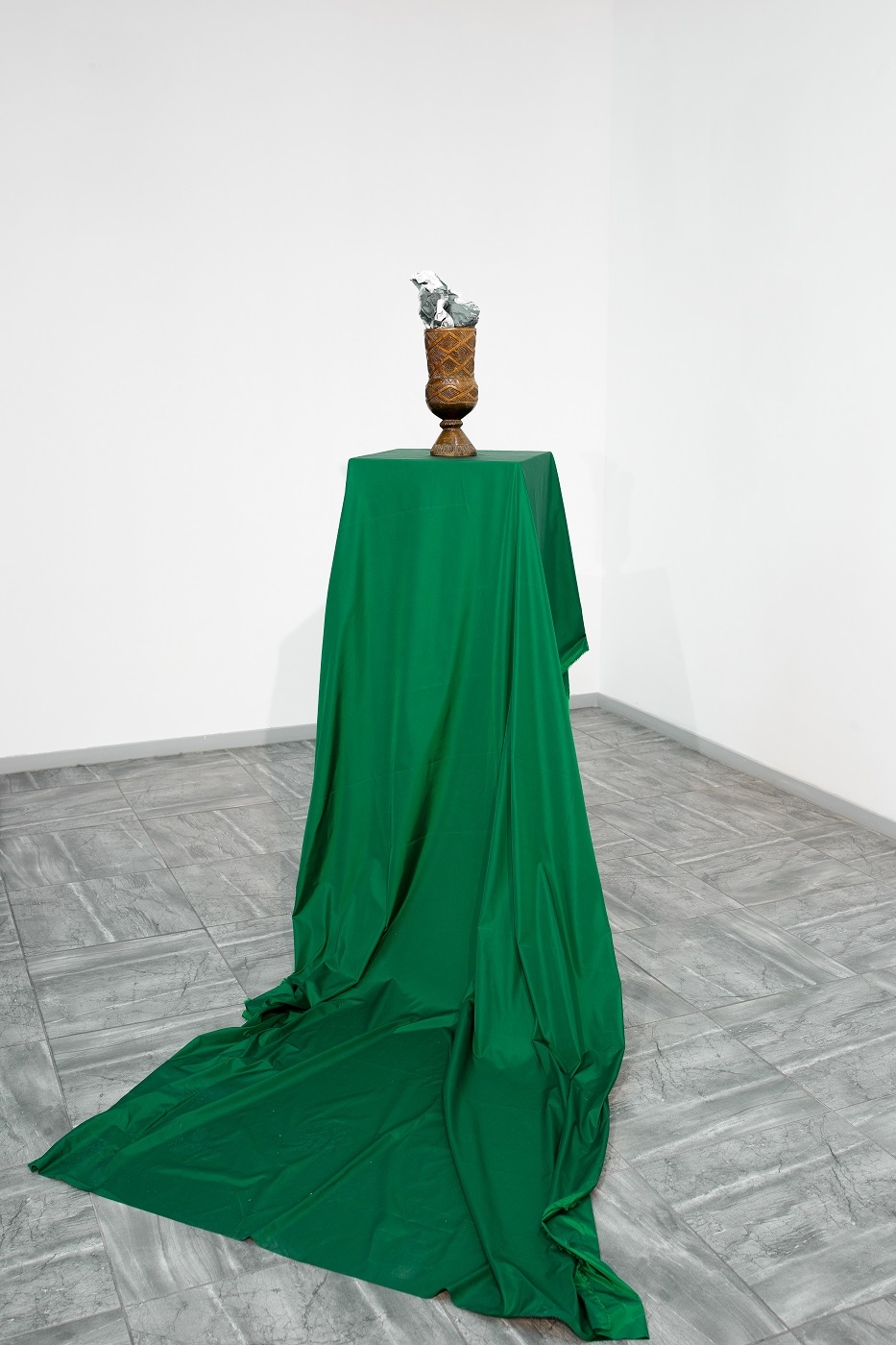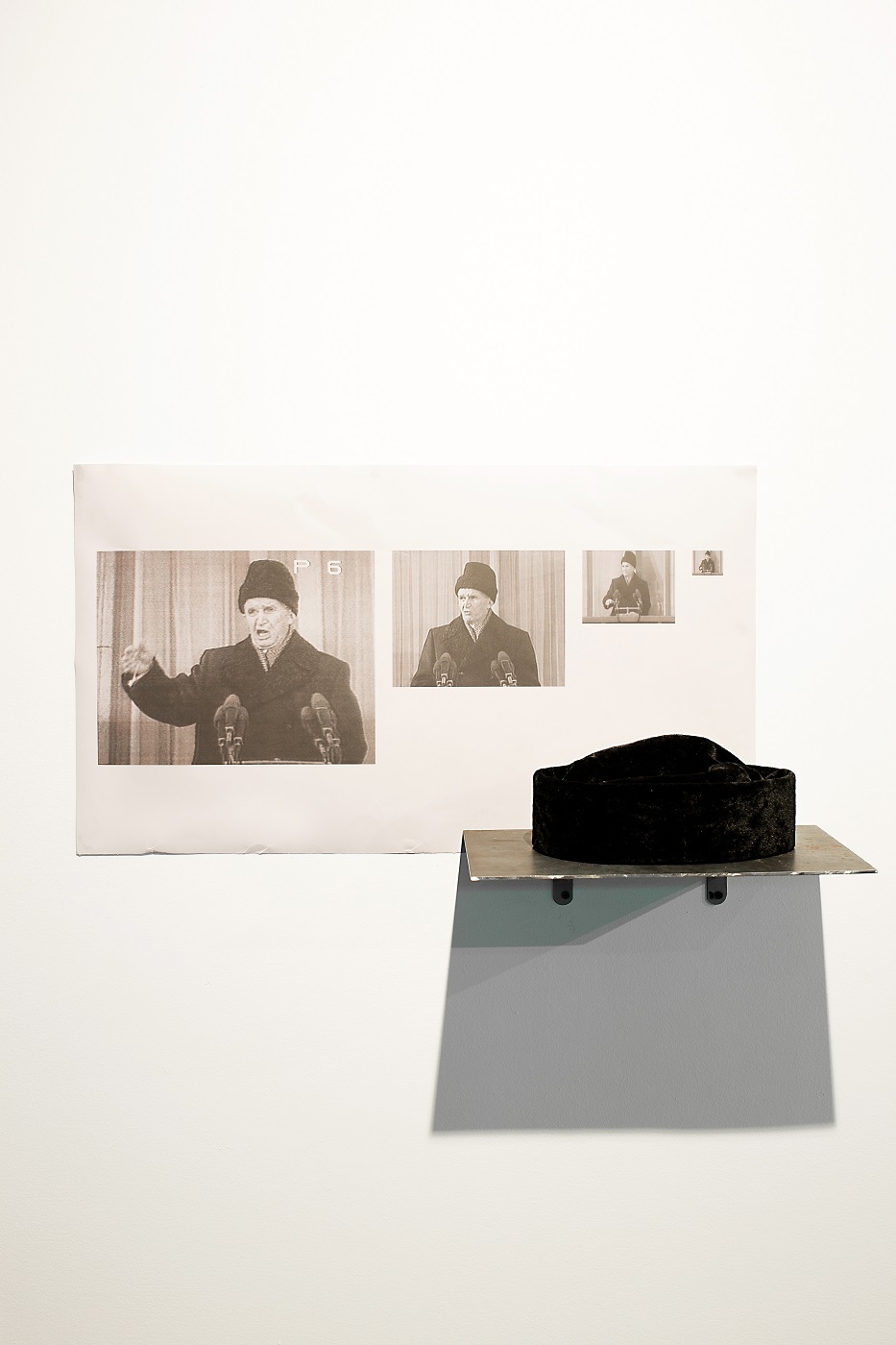
Nikolay Karabinovych moves from research to composition, writing to filmmaking, asking to answering. Some of the Ukrainian artist’s ‘situations’ are personal, as with 7 Minutes—a smirk-filled seven-minute reflection on contemporary art performed in the Kreuzberg Pavillon in Kassel as an addition to the 2018 edition of documenta. Others tap into that which warps a generation, as with Afterhours, an action wherein accounts of armed attacks on raves in the post-Soviet space are chalked upon the floor of another rave, and are swiftly swept away by enraptured dancers.
On a foggy December afternoon, Karabinovych and I sat down in Kyiv to discuss ‘Sweet Pit,’ Khmelnytsky the person, Khmelnytskyi the place, and the insistence of looking in, out, over the shoulder, and ahead.
In describing his work, Karabinovych speaks of a desire to move from the pure and minimalist to the irrational and metaphysical. The outcome of such an intention was on full display in ‘Sweet Pit,’ Karabinovych’s recent solo exhibition curated by Ksenia Malykh at MASLO, an art space affiliated with La Dolce Vita design studio in the midst of a residential development called Status Park in Khmelnytskyi, a regional city named for the 17th century Ukrainian warlord Bohdan Khmelnytsky.
In ‘Sweet Pit,’ Karabinovych confronts the protagonists of totalitarianism individually and collectively in sculpture and film. The Romanovs were executed in a basement in Yekaterinburg in 1918; today, the Mugabes and Hoxhas of old and new history refuse to die in a basement in Khmelnytskyi. Machismo is readymade, and contorted. The artist’s own eyes appear adjacent to a cheap reproduction of the man who lends his name to the municipality. Is he trying to see what he saw?
On a foggy December afternoon, Karabinovych and I sat down in Kyiv to discuss ‘Sweet Pit,’ Khmelnytsky the person, Khmelnytskyi the place, and the insistence of looking in, out, over the shoulder, and ahead. —
Alex Fisher: Something which drew me to your work initially was the abundance of starting points from which it takes form. At times, you appear as a composer; elsewhere, as director or instigator. You are also classically trained in philosophy, which implies a theory-driven discipline. Your approach as artist subsequently appears as your approaches as artist. Are you all of these positions at once?
Nikolay Karabinovych: I can describe this variety of starting points as a children’s game in which you need to connect all points. Then you’ll get a full picture. I do not see any particular conflict in this variety, on the contrary, it helps me to be more sharp. I see myself as a sort of interpreter, and storyteller. Kind of Tevye from Tevye and His Daughters by Sholem Aleichem. For me, it all depends on the story, the context, the factors. The medium can then be documentary film, sculpture, etc. For me, it is not necessary to know at the outset what the end form will be. Much more crucial is the experience of the visitor— what experience they will have. Some time ago, I began to differentiate the directions that interest me and I put in several fictitious characters, my alter egos, who are responsible for a particular field, for example DJ ALBERT HEIJN. The fact is that I often play as a DJ, and I’m tired of being just a DJ. Albert Heijn is the name of a supermarket chain in the Netherlands and Belgium, with an ambiguous reputation. DJ ALBERT HEIJN is an old rave veteran, with slightly right-wing views and the rich colonial history of his parents. By performing upon his name, I test various clichés in electronic music and try to decolonize them.
AF: In some of your work, you engage with people quite collaboratively. I am thinking about Ukrainians: the people who cannot go home, in which you film a Manchester-based Ukrainian ensemble, Орлик (Orlyk), playing a song by the post-punk band New Order. In such circumstances, do you find yourself directing more or receiving more?
Ukrainians: The People Who Couldn`t Go Home, 2018 still from Orlyk Ensemble, Chosen Time, 3`12“, 2018
Ukrainians: The People Who Couldn`t Go Home, 2018 Taras Shevchenko five-book set, VHS tape of New Order concert.
NK: It is a process of exchange meant to show the randomness and absurdity of our lives—a reenactment of an already confusing anecdote. With the collective from Manchester, it was key for me to not act objectively when building the narrative. Rather, it was about sharing—a bringing together of a bunch of completely strange sensations with Taras Shevchenko, Manchester as a city, and post-punk sentimentality. I don’t want anything to be one-directional.
AF: As a Ukrainian, how was it working with the Ukrainian diaspora in Manchester? I imagine their Ukrainian-ness is built from different stuff than your Ukrainian-ness.
NK: I cannot unambiguously define myself as a Ukrainian. Rather, it is simply different depending on the relation to the context in which I am in. I am interested in the question of identity, what remains of their Ukrainian nature, which can survive in alien conditions. The feelings of Ali in [Rainer Werner] Fassbinder’s “Fear Eats the Soul” comes to mind. You know that movie?
AF: No.
NK: It’s a story about a Moroccan guy, Ali, who meets an older German woman, Emmi, in Munich, and their relationship. They eventually get married. Ali is a gastarbeiter (guest worker), and he always has this nostalgia about his motherland. This homesickness often manifests in very strange forms. The Ukrainian diaspora in Manchester is not so large, and you don’t initially think of Ukrainians when you think of diaspora communities in the UK. But it’s there, and it is important to give a voice to them.
AF: Human flow saturates your work, especially this past year. You spent time in the Georgian highlands for research on Iliazd (aka Ilia Zdanevich), Bratislava for your solo exhibition at Hit Gallery, Ljubljana for participation in the Summer School organized by the Museum of Modern Art plus Museum of Contemporary Art Metelkova (MG+MSUM), Ghent for the start of your studies at the Higher Institute for Fine Arts, Kmytiv for ‘Today We Will Invent the Nations,’ and more. I wonder what you’re thinking about now that you weren’t thinking about twelve months ago.
NK: I see myself in some sort of limbo. I am constantly back and forth between Ghent and Kyiv, so geographically I am somewhere in the middle. I guess that means that most often where you can see me is somewhere in the sky near Wrocław. [Laughs.] I would not say that this is some particularly intense schedule. Rather interesting is the fact that I constantly return to Kyiv. Now Kyiv is definitely one of the most interesting places for me. Here, and now, historical time is very well felt. Ghent, and the Belgian context at large, has become really important for me, especially because now I have a new optic on the Ukrainian context. Belgium, of course, has plenty of problems, but they do have, let’s say, a nice working model, institutionally speaking.
That said, I don’t like to be super straight in being too allegiant to one model. For me, it’s crucial not to get stuck in one place.
AF: You often place your work in dialogue with other artists, as with As far as I’m young I make bad works, in which you pull from and parrot the Croatian artist Mladen Stilinović and the Kazakhstani-Russian theorist Alexander Brener. I sense that you have a heightened awareness of who has come before you.
NK: I recently heard an interesting description for this tendency: remix. It carries a bit of a negative connotation, but, for me, it’s not negative. I see the work you mention in a different light, as a collaborative, experimental work. I don’t like this term ‘generation,’ but I like to continue, and develop ideas which have been put to work and that I see continued potential in.
AF: This desire to proliferate and personate that which is pre-existing brings us to your recent exhibition in Khmelnytskyi, ‘Sweet Pit.’
NK: Even in the name! When I received the proposal, and started to think about it, it sounded in my head like I will have an exhibition in Khmelnytsky… that I will have my exhibition in him, the person.
AF: Ha! It’s a big deal, no? Bohdan Khmelnytsky is one of the biggest of the big Ukrainians.
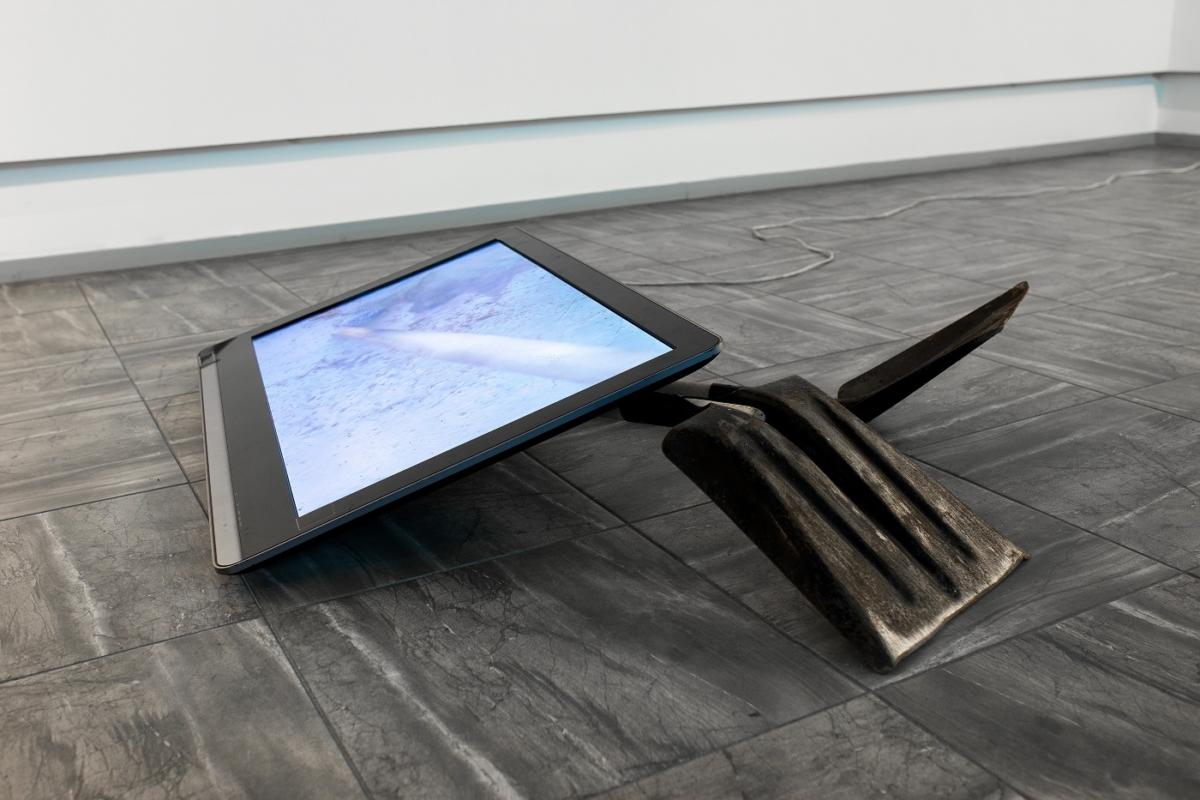

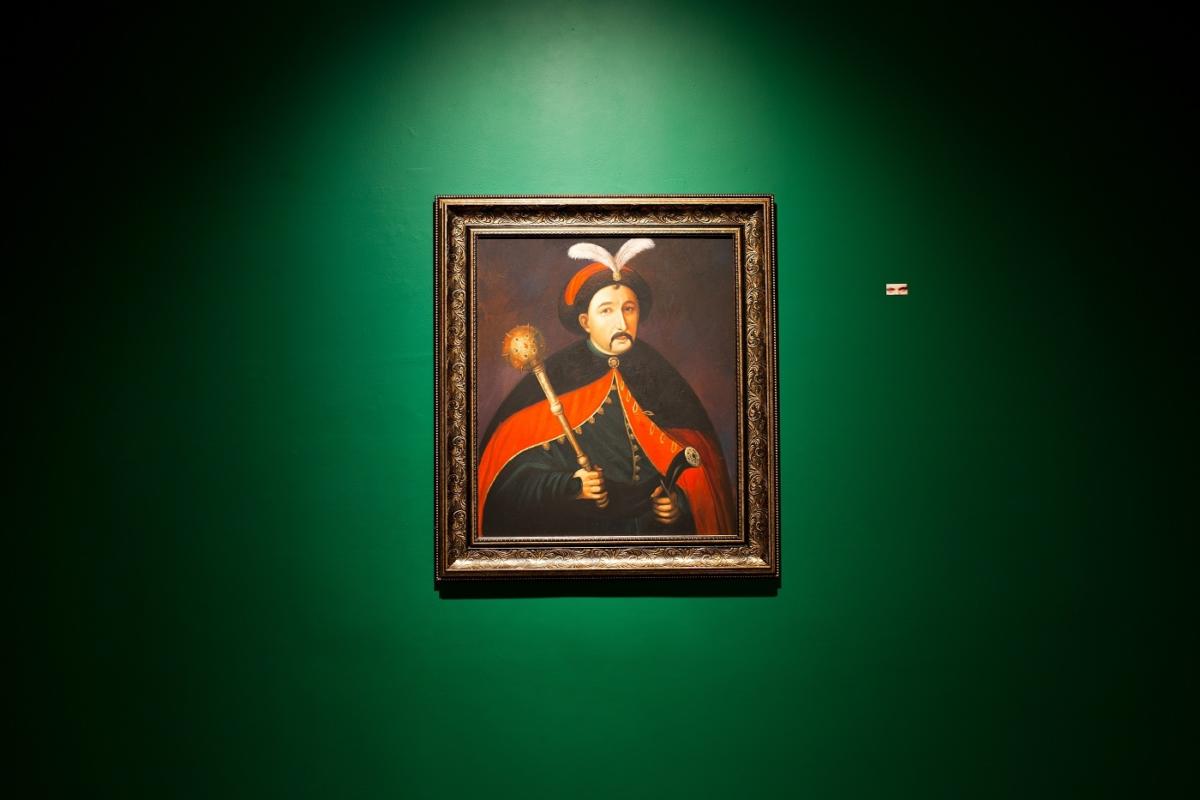
NK: Yes, his face is even on the five hryvnia (Ukrainian currency). What’s also peculiar is that he doesn’t have much connection to Khmelnytskyi, the city named for him. He wasn’t born there, and he didn’t do anything there. I have known of Khmelnytskyi since elementary school, where he is represented as a national hero. But his legacy is a complicated one. For example, in ultra right circles, he is disdained because of his agreements with Moscow, which sought to bring Ukraine in closer unity with the Russian Empire. I find this intriguing: how one person can be manipulated very, very easily.
AF: Khmelnytsky is one of a handful of Ukrainians who have become immortal. People are paying for stuff with him, living in him, walking down his streets, and seeing him in statue after statue.
NK: The myth becomes bigger and bigger. For me, his relationship with the Jewish community is especially troubling. It is well-documented that he played an active part in Jewish pogroms, and his troops killed tens of thousands of Jews. He is definitely guilty in these mass deaths, and still we have this note with his face. He is a hard subject to work with, but an important one to address, especially in the city that bears his name. The same logic follows for all the subjects in ‘Sweet Pit.’ I sought to understand my reaction to what they have done—even if I have not witnessed their effect personally.
AF: In critiquing the machismo with which these characters ruled and ravaged, the dead are resurrected.
NK: But are they really dead? In Albania, [the Communist dictator Enver] Hoxha’s bunkers are everywhere. They have become part of the landscape; the ability to exclude them from the landscape has been lost. Some events recall other events; when making my work, When a shovel can become a flag, about the hysteria surrounding the death of Libya’s Muammar al-Qaddafi, I was reminded of the 2nd of May disaster in my hometown, Odesa, in 2014, in which forty-eight people were burned to death. Similar sentiments happened when addressing [Romanian Communist leader] Ceaușescu in Alo Alo. I’m trying to understand what underlies this violence. In the process, solidarity forms, and the response can become poetic. As with a choir, you have your voice and someone else joins you. And so you split your voice with that voice.
AF: There are a lot of voices that appear in ‘Sweet Pit.’ They combine in All, that you want to forget, a vase with a vaguely African design placed on a green velvet-covered pedestal.
NK: This vase is filled with ashes, the ashes of all the dictators. I bought this vase in a second hand store in Ghent. I had a brilliant conversation with the owner of the shop—about the threat of the far right movement in Flanders. That guy told me the vase was his from Congo, and that he cherished it as a memory of being there. I think it was important to put out this vase, this memory, and put it not in his memory, not in Belgium or Congo, but in Ukraine. And let all the ghosts of the places and people go with it.
AF: As an object, the vase echoes an heirloom. It aspires to be antique, but looks fake.
NK: I think it is definitely fake, and maybe the owner’s story is also fake.
AF: This inability to find the origin—you can’t get there, so you get to project what you think, or want to think. In so doing, you mix in the mass produced, that which is too shiny, and a tad bit (or a ton) caricatured.
NK: I like to question this way.
Interview has been edited and condensed for clarity
Nikolay Karabinovych’s ‘Sweet Pit’ ran from November 15 through December 8th, 2019 at MASLO in Khmelnytskyi, Ukraine. He is a semi-finalist for the 2020 edition of the PinchukArtCentre Prize.
Alex Fisher is an art historian from Buffalo, New York based in Kyiv, where he is researching Ukrainian contemporary art as a Fulbright scholar in association with Mystetskyi Arsenal and IZOLYATSIA.
Imprint
| Artist | Nikolay Karabinovych |
| Exhibition | Sweet Pit |
| Place / venue | MASLO in Khmelnytskyi |
| Dates | 15 XI - 8 XII, 2019 |
| Photos | All images are copyright and courtesy the artist. |
| Index | Alex Fisher Nikolay Karabinovych |

